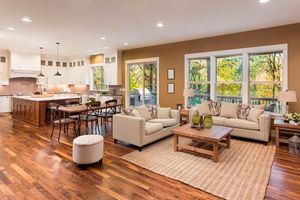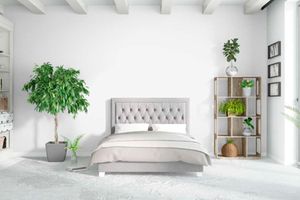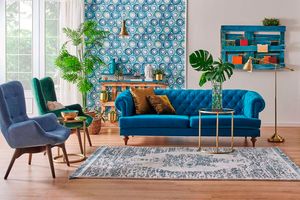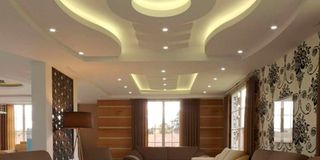
Gypsum is not only easy to set up but can also be customised to any colour, design, shape, and theme of your choice.
In most Kenyan homes nowadays, you see coloured bulbs flickering at night from a distance. Gypsum ceilings in bedrooms, living rooms, or corridors have coloured bulbs, perhaps to give the house an excellent mood lighting.
You would even find neon, amber or blue lighting in toilets, corridors and children's rooms. However, eye specialists warn this kind of lighting is increasingly causing damage to the eyes and triggers migraines, and headaches that can cause severe throbbing pain or a pulsing sensation, usually on one side of the head.
Of concern is the permanent retina damage.
Is there a specific bulb that can reduce eye strain?
Understanding eye sensitivity is one of the important things to think of when choosing lighting fixtures in a home.
Dr Denis Omae, an optometrist, says one has to look for comfortable light, a comfortable light is not glaring light.
"Not glaring lighting sources would be ideal in a home. Glaring light shines, think about the old traditional light bulbs. These are not the kind of bulbs that you want in your house. Buy bulbs that emit subtle light like the one from a lampshade,” he says.
When constructing a house, many people obsess over what is covering the floor and the walls but leave the ceiling to the gypsum technician.
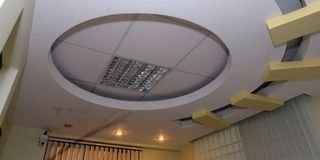
When you want to illuminate a room, sometimes a simple ceiling fixture is the best solution.
Dr Omae says to plan for lighting as you would plan for other parts of the house and hire someone who understands the formula that goes into calculating the amount of intensity of light. When you want to illuminate a room, sometimes a simple ceiling fixture is the best solution.
For instance, how to ensure your eyes are comfortable to move from a lightly coloured room to a darker room without causing luminosity- which is the state of producing or reflecting bright light or the light appearing to shine.
He says the light intensity of a single bulb in a larger room would be so much for a smaller room.
“If you have the same size of bulb and specifications in the large rooms and the smaller rooms, you will suffer from the luminosity because in one room the light will be intense,” he adds.
Green light
Bringing in a tonne of light on the ceiling is one way to give your house character, but choose calming colours. So which light is best for the house if you fancy coloured bulbs and want light to bounce across the ceiling?
Dr Anne Jepkemboi, an optometrist, says some of her patients have had a positive experience with green light.
“Green light according to several patients is soothing to the eyes and has less strain, it is much tolerated,” she says.
She discourages blue light from LED bulbs because it can cause eye strain and sleep disruptions.
Dr Omae adds that blue light typically causes alertness and is the reason nightclubs use coloured bulbs.
White light from LED bulbs also disrupt sleep by interfering with the body's natural sleep-wake cycle.
“The use of electronics before sleep suppresses the release of melatonin, a hormone that regulates the sleep-wake pattern. When this happens the brain thinks it’s daytime even though it’s not, hence it leads to a delay in sleep,” said Dr Jepkemboi.
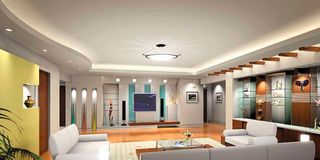
Gypsum ceiling lined with LED lighting.
The specialists say the eye problems have also been triggered by prolonged use of devices in offices and then going home to coloured lighting.
“Due to the long use of digital devices, there is less blinking which often leads to eye dryness and redness. Because of the short distance between the screens and the eyes, there is more eye convergence thus the eye strain comes in,” says Dr Jepkemboi.
The optometrists say the coloured lights also trigger headaches and flickering can make the symptoms worse.
“Especially blue lights emitted from artificial lights like tablets, smartphones and computers will cause frontal and side headaches, especially for prolonged users,” adds Dr Jepkemboi.
For those who are always on their computers and smartphones, the optometrists offer tips on how to protect your eyes from overexposure to blue light; reduce screen time and use natural lighting.
“Also, adjust the screen brightness on the smartphone or laptop. Take breaks, and follow the 20-20-20 rule. Every 20 minutes look at something 20 feet away for 20 seconds. Also, consider eyeglasses with anti-glare or blue block filters to help during screen time,” said Dr Jepkemboi.


